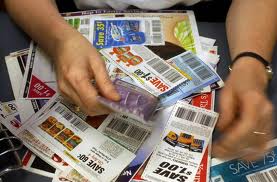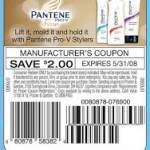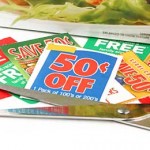For the next few weeks, I’ll be featuring a few posts each week as a part of a series called “Couponing A to Z” which will hopefully give you tips to get started with couponing! Today I’m going to talk about ethical coupon usage. If you haven’t already, check out the rest of my Couponing A to Z series here.
There are plenty of sites out there (and even some TV shows) that will show you the “wrong” way to use coupons. Just because you can do something doesn’t mean that you should. When people use coupons incorrectly, it has an impact on all of us. I’ve been using coupons for several years now, so I’ve seen the cycle of what happens when there is a wave of fraudulent coupons or when coupons are used incorrectly. Several of my grocery stores stopped taking internet printables for awhile a few years ago when several fake, high dollar printable coupons were released. When you use coupons incorrectly, stores will not be reimbursed, which means that they lose money. Guess who foots the bill for this? We do! Prices will be higher, stores will tighten up their coupon policies, and manufacturer’s will stop putting out high dollar coupons.
1. Use coupons as they are intended – Most coupons have specifications such as size limitations included on them. If the coupon says “good on any” then it truly should be good on any product, including trial sizes. If the coupon says “one per purchase” that means that you can use one coupon foreach item that you are purchasing. So, if you are purchasing 5 items and you have 5 coupons, you should be able to use all 5 items. If the coupon says “one per transaction” that means that you can only use one of those coupons in your transaction. So, if you have 5 coupons, you would have to do 5 separate transactions to use all of those coupons. Also, pay attention to the terms of the coupon. For example, if a coupon says $1 off 2, you would need to purchase two products to use that one coupon.
2. Do not copy coupons – One of the biggest “newbie” mistakes I hear about is people copying coupons and particularly printable coupons. Many printable coupons have print limits, which can be frustrating and they all “look” the same, so what’s the harm, right? What some people don’t realize is that the printable coupons have a unique code that prints in the upper right hand corner of each coupon. In addition, some have a special background that will not show up if you copy them. Many store employees have been trained to look for this, and if you have copied coupons, it will quickly become obvious. A visit with your store’s loss prevention is not worth that extra bargain and will not even end up being a bargain in the long run. Many manufacturer’s are now changing the code on printable coupons, which will make it more difficult to “decode” and more difficult to copy.
3. Get your printable coupons from a reliable source – Make sure your printable coupons come from a reliable source such as Coupons.com, Redplum.com, or Smartsource.com. Facebook (if it’s the manufacturer’s page) or the manufacturer’s websites are also a reliable source. If you get a PDF coupon e-mailed to you, there’s a good chance that it’s not a valid coupon. If you get a printable coupon for a free product or a high dollar coupon, there’s a good chance that it’s a fake. The CIC has a list of known fraudulent coupons here. Copying coupons or using “fake” or altered coupons is a punishable offense.
4. Don’t clear shelves – This is self explanatory! Be a courteous shopper and leave something for other shoppers. If you want to purchase large quantities of an item, visit separate stores or make arrangements with the manager to place a special order.
*This post may contain affiliate links. Please refer to my disclosure policy for more information














